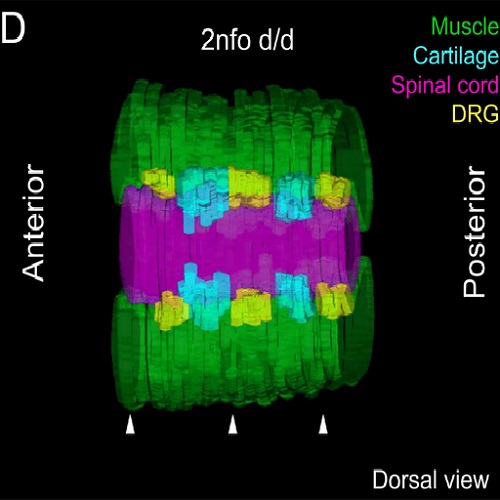Axolotls with an under- or oversupply of neural crest can regulate the sizes of their dorsal root ganglia to normal levels.
How animals adjust the size of their organs is a fundamental, enduring question in biology. Here we manipulate the amount of neural crest (NC) precursors for the dorsal root ganglia (DRG) in axolotl. We produce embryos with an under- or over-supply of pre-migratory NC in order to find out if DRG can regulate their sizes during development. Axolotl embryos are perfectly suitable for this research. Firstly, they are optimal for microsurgical manipulations and tissue repair. Secondly, they possess, unlike most other vertebrates, only one neural crest string located on top of the neural tube. This condition and position enables NC cells to migrate to either side of the embryo and participate in the regulation of NC cell distribution. We show that size compensation of DRG in axolotl occurs in 2 cm juveniles after undersupply of NC (up-regulation) and in 5 cm juveniles after oversupply of NC (down-regulation). The size of DRG is likely to be regulated locally within the DRG and not via adaptations of the pre-migratory NC or during NC cell migration. Ipsi- and contralateral NC cell migration occurs both in embryos with one and two neural folds, and contralateral migration of NC is the only source for contralateral DRG formation in embryos with only one neural fold. Compensatory size increase is accompanied by an increase in cell division of a DRG precursor pool (PCNA+/SOX2-), rather than by DRG neurons or glial cells. During compensatory size decrease, increased apoptosis and reduced proliferation of DRG cells are observed.
Back to list
